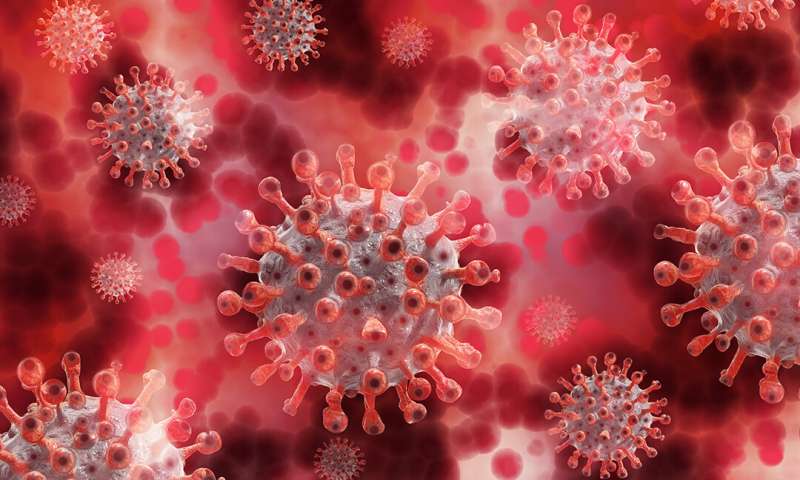Industrial engineering department pivots to address COVID-19

In response to the current pandemic, faculty members in the Harold and Inge Marcus Department of Industrial and Manufacturing Engineering (IME) at Penn State have rapidly shifted their attention to aid in developing various scalable solutions for COVID-19.
"I am amazed at the efforts being put forth by our faculty and faculty across the University," said Ling Rothrock, interim department head. "Industrial engineering has mobilized quickly and efficiently to work on a myriad of projects across domains, and in doing so, it truly highlights Penn State's 'We Are' spirit. We are here for our community members, our neighbors and our country."
Modeling COVID-19 vulnerability
In an effort to lessen COVID-19 spread, Soundar Kumara, Allen E. Pearce and Allen M. Pearce Professor of Industrial Engineering, brought together a team to design an advanced artificial intelligence and machine learning model to assess vulnerability counties in the United States.
The team includes Kumara; Paul Griffin, St. Vincent Health Chair and director of the Regenstrief Center for Healthcare Engineering at Purdue University; and doctoral students Mihir Mehta and Juxihong Julaiti.
The team gathered data from various public sources such as the U.S. Census, Centers for Disease Control and Prevention, Global Heath Data Exchange and The New York Times to obtain county level statistics for confirmed COVID-19 cases, including age, gender, population density, diabetes, cancer, hypertension and overall county disease mortality.
Kumara explained that the model was designed to potentially assist intervention and preparation for resource allocations, health policy and health care systems. The team also designed the model to be used at the recovery stage in order to assess the viability of re-opening counties and re-distributing resources.
"Our goal with this model is to try and help counties figure out how vulnerable they are to this virus based on their demographics and how much the neighboring counties are affected," Kumara said. "If they have a confirmed case one day, this model may inform them what their numbers will look like after five days. This might help inform critical health care policies."
Using artificial intelligence (AI) to allocate testing
Utilizing the zip-code level of COVID-19 data from the Pennsylvania Department of Health, researchers in the Penn State National Science Foundation Center for Health Organization Transformation (Penn State CHOT) have developed an AI tool to make the optimal allocation of diagnostic testing possible.
According to Runsang Liu, a master's student in IME, and Hui Yang, director of Penn State CHOT and associate professor of industrial engineering, the density of a population, number of confirmed cases and size of vulnerable populations can provide critical information to help optimize the allocation of testing centers such as drive-thru testing sites; however, optimality depends greatly on a site's accessibility, location and region coverage.
Their AI tool aims to help balance accessibility and testing equity for each region in Pennsylvania, allowing the flexibility to make site adjustments based on data.
"Artificial intelligence is an indispensable tool to help realize the full potential of data for decision support, as well as to optimize accessibility and equity in health systems," Yang said.
Modeling COVID-19 spread
According to Yang, simulation modeling of virus spread is essential for making health systems respond in a fast and proactive manner to protect people from COVID-19 exposure and disease propagation risk.
Via a $200,000 grant for Rapid Response Research from the National Science Foundation (NSF), Yang gathered a Penn State CHOT team to develop a simulation model of human movement patterns and COVID-19 spread dynamics to predict real-time positions of infected populations in a spatial network.
The provision of a graphical user interface (GUI) software for the simulation allows the user to select different types of spatial networks, provides flexibility to define the population size and heterogeneity and enables the prediction of real-time positions for unaffected, infected, recovered and deceased people in a spatial region.
Additionally, the GUI tool enables "what-if" analysis that can possibly allow population centers at any scale to dynamically adjust health policies, plan near-term health care capacity and control virus spread with rapid and timely measures.
"Simulation modeling overcomes practical and ethical limitations in real-world experiments and provides a much higher level of flexibility to analyze different control variables and alternative policies," Yang said.
The Manufacturing and Sterilization for COVID-19 Initiative (MASC)
Timothy Simpson, Paul Morrow Professor of Engineering Design and Manufacturing in the College of Engineering, is leading MASC, an effort to address the growing need for face masks, ventilators and other personal protective equipment (PPE).
An interdisciplinary team of more than 350 Penn State faculty, staff and students mobilized to address the widespread shortage of protective gear by creating fast and scalable solutions for sterilizing and manufacturing PPEs.
When the opportunity arose, Vittal Prabhu, professor of industrial engineering and Charles and Enid Schneider Faculty Chair in Service Enterprise Engineering, jumped on the chance to assist.
Prabhu's advisees, doctoral student Amol Kulkarni and master's student Rohit Rawal, rapidly developed a working data visualization map to identify local supply chain systems in Pennsylvania and provide a quick way to search and identify Food and Drug Administration (FDA)-registered companies.
The map is able to quickly aid users to make effective decisions via various filter criteria with the simple click of a button.
"We are in a race against time in fighting this pandemic," Prabhu said. "Health care workers, retailers and others that are working on the front lines are risking their personal safety to provide services for the rest of us. If engineers can help them be more productive, then I view it as our call of duty to contribute."
Prabhu and his students also added the capability to find plastics manufacturers and to view Pennsylvania-level COVID-19 data.
To learn how you can support Penn State's response to the novel coronavirus pandemic, visit raise.psu.edu/response.
Provided by Pennsylvania State University